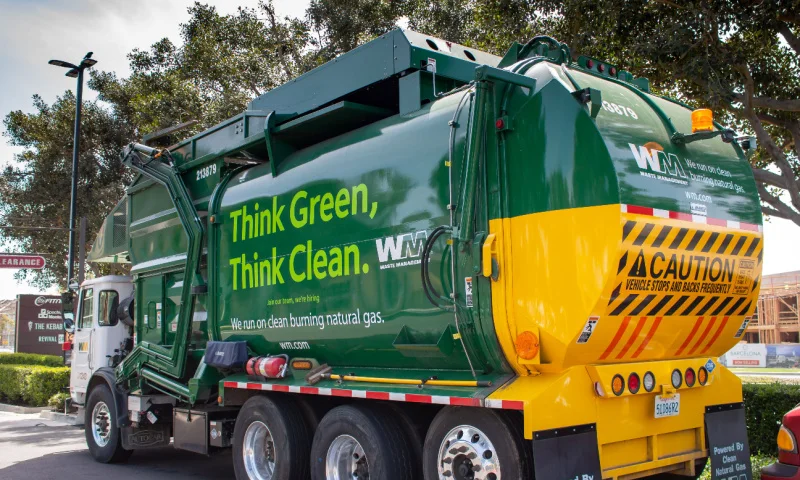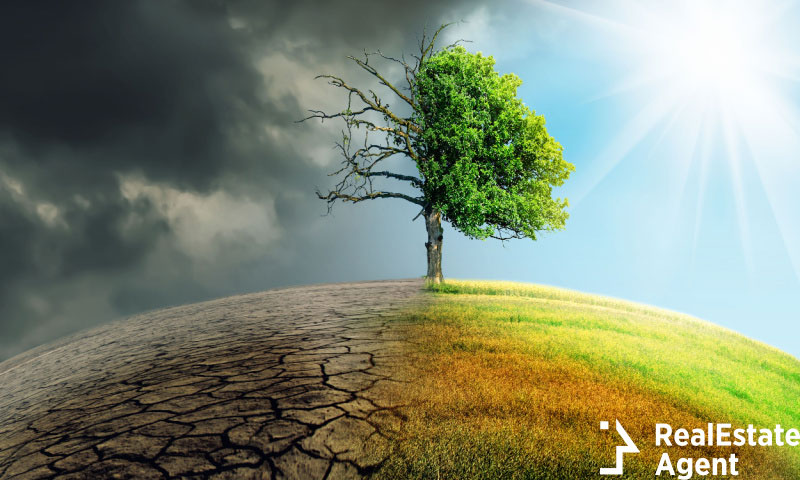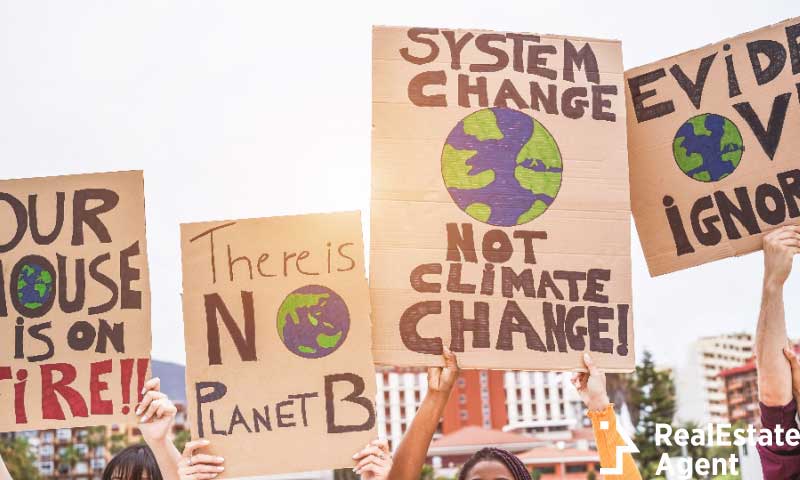We see it everywhere. It’s around us and at every street corner. It’s in our homes, cars, offices, and personal belongings, but it doesn’t stay there. It gets in our environment and stays there for a long time. You might have tossed away that plastic bottle you took with you as you hiked through national parks, but plastics are not done with the environment that quickly.
Looking at single-use plastics, we need to become aware that even if we only use them for a few minutes or hours, they need around two decades to decompose or more. That might not seem much, but a plastic water bottle created out of polyethylene terephthalate, or PET, breaks down in approximately 450 years.
Plastic has many uses in our modern lifestyle, but we must consider its negative impact during our daily purchases. While plastic revolutionized our lifestyles and increased our comfort in our daily lives by being easy to mold, color, and manufacture in any possible form necessary, it presented us with a big problem. Plastic’s long-lasting characteristic is the curse that will haunt generations of humans if we don’t fix it.
Plastic impact on Modern Life
When people consider how their use of plastic affects the environment, they think of single-use plastic bags, straws, plastic bottles, and single-use coffee cups. Those are the types of plastic we are conscious about and try to be environmentally responsible with. However, only considering those types of plastics is a treacherous safety net as those types of plastic are a small percentage of the plastic used worldwide. But wait. It gets worse. While we may think that many of the plastics that we encounter daily are recyclable, the truth is that they aren’t.
There are hundreds of types of plastics manufactured worldwide, and they aren’t the same. We believe that addressing this subject will provide necessary information as we need to tackle the pollution and sustainability issues globally. The more we understand this issue, the easier it will be to understand just how necessary it is to end plastic use as soon as possible and through any means necessary.
The seven most common types of plastics from the hundreds of varieties that exist worldwide can be split into two categories: recyclable and non-recyclable. In 2015 we manufactured 322 million tons of plastics globally. So far, nothing is new. However, out of those seven types, only two, PET and HDPE, are recyclable, and from the 322 mil tons of plastics manufactured worldwide, only 33 million tons were PET and 52 million tons were HDPE. Furthermore, out of the 322 million tons of plastics, less than 10% are actually recycled. We can not recycle the other five types, and food packaging, single-use coffee cups, and styrofoam containers are not recyclable.
Saying no to Plastics
Considering the statistics presented above, while focusing on what we actually recycle, we understand that recycling isn’t the solution. The amount of plastic manufactured annually is constantly growing, and our recycling solutions can’t keep up. We are still producing too much plastic, and sustainable solutions need to be rigorous.
Whether it’s in the food containers that we purchase with our products or interior design products, electronics, or clothes, our response should be NO! There are many environmentally friendly products that we can replace the plastics from our lives. The easiest to use, sustain, maintain and recycle are those based on wood, glass, and metal. There are countless alternatives available on the market, and replacing them will help us financially. Instead of buying a plastic bottle of water every time you go hiking, you can use one made out of stainless steel or copper. You can replace your plastic food containers with metal or glass ones while avoiding excessive packaging with the products you purchase.
Let’s look at the most eco-friendly household products that we can easily replace throughout our homes. Bringing sustainability into your home is one of the best ways to decrease your family’s carbon footprint and the easiest.
Invest in Environmentally Friendly Products
While we usually look at the broader picture and the rate of return. Innovative sustainable products bring the most significant gain. Yes, a clean planet is that gain, but it’s like a clean home or hand. The environmentally harmful products we have around us 24/7 aren’t just bad for the environment. They are also harmful to us.
Besides the apparent type of pollution, air pollution, which makes us literally choke, why don’t we look at how everyday plastic harms us? Just like we should focus our financial investments on green energy sources to limit pollution worldwide, we should invest in environmentally friendly products to limit pollution in our bodies.
Studies and environmentalists show concern at evidence about the transfer of chemicals used in food packaging plastics into the human body. Many medical concerns are raised, not limited to hormonal or endocrinal health problems. Studies showed IQ deficits and developmental health issues in children and reproductive health problems for both men and women. The idea isn’t about saving the planet but about protecting yourself. Instead of single-use plastics, contact your local representatives and push for legislation that limits the use of plastics across industries and stop buying plastic products. Let’s see what the best environmentally friendly products are.
Reusable Material Utensils and Cookware
While kitchen essentials such as spoons, forks, and knives in our homes are almost entirely made out of metal or wood, there are some environmentally harmful utensils we use. Besides the single-use plastic utensils, glasses and plates, many kitchen cookware and utensils contain plastic. The most common would be the non-scratch silicone spatula you use in your non-stick pan. We have two problems there. Studies haven’t proved that silicone utensils and non-stick pans are safe for cooking food. Actually, in the case of non-stick pans, a court case proved their danger, but utensils and cookware made out of silicone aren’t proven to be completely safe either.
There are sustainable alternatives: everything from utensils, pot and pan handles, glass cookware, steel pots and pans, and dutch oven pots. Eco-friendly household products can be made from bamboo. These environmentally friendly products cause no harm to human health or the environment and have a longer life expectancy than the ecologically harmful alternatives. We are accustomed to using them, but we can easily replace them with many innovative sustainable products, and they can also be more cost-efficient.
Eco-Friendly Bathroom Essentials
All the soaps, detergents, and other bathroom essentials you commonly use are not the most environmentally friendly products available on the market. By simply replacing them with eco-friendly household products, you can decrease the amount of toxins you expose yourself to and the number of chemicals you expose the environment to. By replacing your shampoo bottles and soaps with solid alternatives, you will limit the amount of plastic produced and use environmentally friendly products that are free of toxins.
Furthermore, the sponges, razors, and disposable skincare and cosmetic products don’t need to contain plastics or be disposable after one use. There are many reusable alternatives on the market. The most common and innovative sustainable products are:
- Reusable razors, similar to the ones used by our grandparents;
- Reusable makeup removal pads made out of natural textile materials (cotton, linen, velvet, or denim);
- Reusable and biodegradable hygiene products (textile pads, bamboo toothbrushes);
- Reusable Q-Tips made out of biodegradable materials (bamboo or wood);
- Plant-based eco-friendly loofahs 100% natural, 100% toxin-free, 100% biodegradable.
Zero-waste Shopping
Regardless of what you’re shopping for, the items you use and purchase can be environmentally friendly products. When you go grocery shopping, you need something to hold all your groceries, but you can use reusable textile bags instead of plastic ones. They are easier to pack and put in your purse or luggage, and you can wash them if they get dirty. Similarly, you can use reusable paper bags for dry vegetables or glass and metal containers for bulk products.
Other types of shopping don’t need to be environmentally harmful, but it’s not always easy or affordable to purchase organic, plastic, and chemical-free clothes, but there are alternatives. You can make sure that you get the most use of the clothing articles you are buying and donate or recycle them when you no longer use them. Try replacing a clothing article when you throw an old one out. Stay away from fast fashion whenever you can (always, if possible) and purchase slow-fashion clothing that lasts longer and is also environmentally conscious. Add an eco-friendly twist to your wardrobe by paying more attention to the clothes that you buy. Look for clothing articles or other textiles you use in your home. There are alternatives made out of organic cotton, linen, or the most sustainable material available on the planet, hemp.
Eco-friendly Personal Items
While recycled ocean plastic eyewear isn’t the most sustainable option with bamboo eyewear available on the market, it is better than virgin plastic eyewear. Many similar personal items and accessories are made from virgin plastics. The eco-friendly alternatives are the environmentally conscious products we should purchase. In some instances, recycled plastic products are good alternatives, but we should stop producing recyclable single-use plastic for that to work. Try to remember that recyclable plastics only make a small percentage of plastics worldwide. Some plastic-free innovative sustainable products are the 100% compostable Pela phone cases.
When it comes to the personal items, we often purchase and throw away after consuming their content, single-use coffee cups and plastic bottles are at the top. You can easily replace them by buying a reusable coffee cup that your favorite barista can fill with your favorite morning drink. Similarly, purchase stainless steel or copper bottles that do not contain BPAs (potentially harmful chemicals that can seep into your water). If you’re dependent on the computer, laptops, and tablets in your life, take a closer look at the products manufactured by iameco from I AM ECO. Their products have a 70% lower carbon footprint than traditional products. In the case of their eco laptop, their product decreases greenhouse gas emissions by 30%, reuses 70% of the material used, and reduces 75% of the production’s freshwater use.
Conclusion
What is clear to see is that environmentally conscious decisions are financially sustainable as well. We love to discover new products that have such a low carbon footprint, or even non-existent levels of carbon emitted into the atmosphere. How can we not?! What’s better than the knowledge that your laptop has such a low negative impact on the environment? What would make an environmentalist happier than having a copper on-the-go bottle or a to-go cup that doesn’t poison you? I wish the global community could be even more aware of these facts and guide their shopping decisions on sustainable and eco-friendly principles. It is something that can be done, as proven above, with ease.
Let us know in the comments section below what your opinion is regarding this topic of global interest. Are you more likely to spend an extra dollar on a product that is eco-friendly or not? Like & Share this article with friends and family regardless of their opinion on the matter. Their opinion is simply connected to their budget and their budget won’t be negatively affected by this change.














